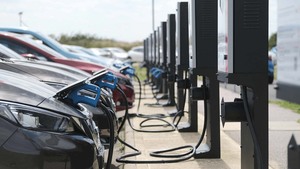Bloomberg New Energy Finance (BNEF) has published its annual EV outlook, providing a long-term forecast on how electrification will impact road transport from now to 2040.
Here are the key takeaway points:
- Increasing EV sales. Sales of EVs are increasing. While only a few thousand EVs were sold in 2010, in 2018 – not even a decade later – annual sales had risen to 2 million. BNEF expects these sales to rise even further up to 10 million in 2025, 28 million in 2030 and 56 million in 2040. So, by 2040 57% of all new passenger vehicle sales will be EVs, resulting in EVs accounting for 30% of the global passenger vehicle fleet.
- Sales of ICEs peaked. As battery prices keep falling, BNEF expects price parity between EVs and ICEs by the mid-2020s in most segments. To have an idea: in 2010 the volume weighted average lithium-ion pack price was about $1,160 while in 2018 this has fallen to $176. In addition, improving recycling techniques and other battery techniques could prevent issues of supply with the typical raw materials of EV batteries such as lithium and cobalt.
- Other mobility modes. Not only are electric cars are competing with ICE vehicles, so are the different mobility modes, such as ridehailing, carsharing and even autonomous cars in the future.
- Other mobility needs. In addition to the other competing mobility modes, there are other factors causing different mobility needs that might not be answered best with classic ICE vehicles. Think of changing demographics and population growth, which all put the urban mobility system under pressure, and require different kinds of mobility and/or vehicles.
- EV models are on the rise. Due to tightening emission regulations on local and on national level, ie. diesel bans and low emission zones, in addition to emission regulations such as WLTP, carmakers have expanded their EV offer. In addition, several carmakers pledged to offer an entirely electric fleet in the (near) future.
- … but they are not there yet. they make up less than 0.5% of the global vehicle fleet. BNEF expects to see 500 million passenger EVs on the road by 2040 and 40 million commercial EVs. By that time the share of ICEs will start shrinking, as BNEF expects to see the passenger ICE vehicles continuing to grow until 2030 after which it will decline.

Battery prices keep falling. As a result, we expect price parity between EVs and internal combustion vehicles (ICE) by the mid-2020s in most segments, though there is wide variation between geographies and vehicle segments. Emissions regulations are getting tighter, both at the city level and the national level and automakers are responding with a surge of new EV models launching in the next 5 years.
BNEF
- China leads the pack. China continues to lead EVs in all segments in the BNEF outlook, so China is expected to account for 48% of the passenger EV sales market in 2025, 34% in 2030 and 26% in 2040. This is definitely caused by the aggressive policy-supported push at Chinese national and regional levels.
- … and Europe follows. In the 2020s Europe will become the number 2 EV market, taking over the US. This evolution will be caused both by commitments from domestic car makers and tightening fuel economy regulations.
- APAC closes the row. In South-East Asian markets the EV uptake goes much slower, especially in those countries where two- or three-wheelers are more attractive mobility modes. Electric scooters for instance might for these countries be a more appropriate electrification goal than electric cars.
- Other transportation. Electrification of transportation goes beyond personal vehicles alone, it spreads to passenger and cargo transportation as well. BNEF sees the electrification of the global bus fleet increasing with 400,000 e-buses on the roads today, while commercial e-LCVs and trucks sales are expected to accelerate in the 2020s. BNEF expects 56% of LCV sales and 31% of medium commercial vehicles in China, the US and Europe to be electric by 2040.
Now is the time to consider your fleet strategy for 2020 for what is sure to be a turning point for the Global vehicle industry. Take a look at the related posts for more information about how to electrify your fleet.



